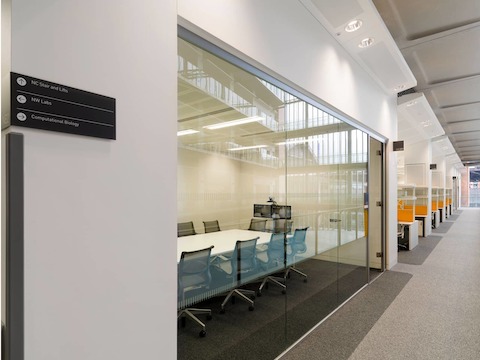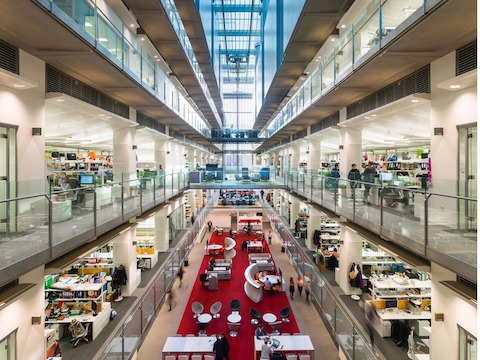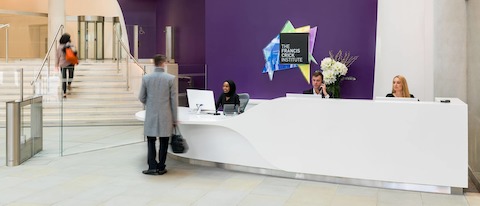Francis Crick Institute
Europe's largest biomedical research institute under one roof
London
Download PDF (566 KB)
An independent organisation, the Francis Crick Institute was founded by the Medical Research Council, Cancer Research UK, Wellcome Trust, University College London, Imperial College London, and King’s College London.
The Francis Crick Institute is now Europe’s largest biomedical research institute under one roof, known for biomedical discovery research. Through a uniquely collaborative governance design structure, scientists are drawn to collaborate across disciplines to encourage new innovations outside the silos of departments. Their hope is that this will encourage discoveries to become treatments as efficiently as possible. Furthermore, research discoveries are shared transparently and globally.
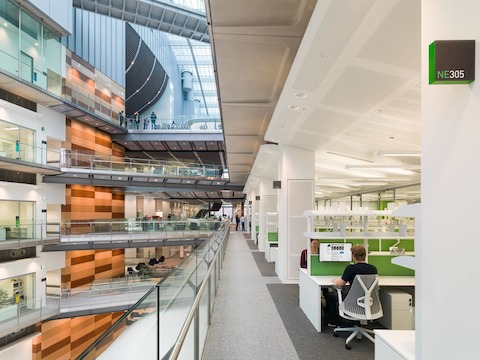
HOK was the lead designer and architect for the Crick’s 1,000,000 square foot facility. The multidisciplinary and collaborative nature of the research teams was articulated early on as a key driver for the distinct building design. The building also needed to flex due to the inhabitants’ ever-changing needs. Therefore, the design team identified reconfigurable and durable furniture solutions as a key part of their design. Over a 5-year partnership with the institute and design team, Herman Miller developed solutions to specifically meet the requirements of the scientists, staff, and community.
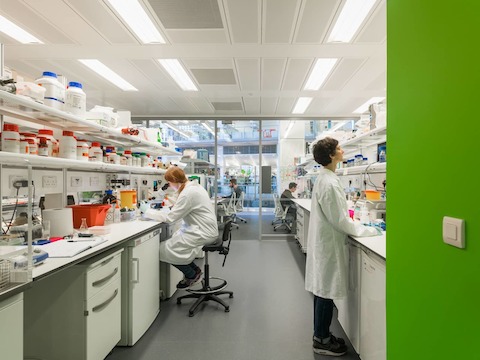
The Herman Miller and dealer team worked with the Layout Studio Portfolio to create a system of reconfigurable settings with significant storage, aiming to promote open working practices, and to enable scalability and changes in technology and team functions. 137 offices were individually tailored to the function and needs of each research team.
